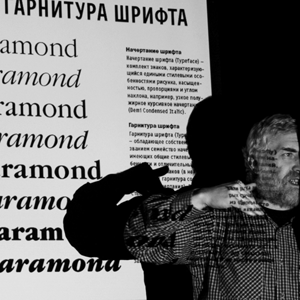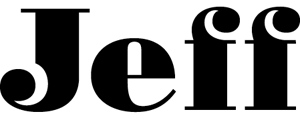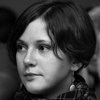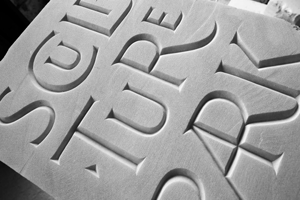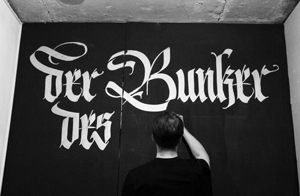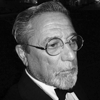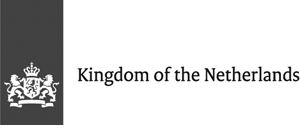Program
17 November
| 12:00 |
Alexey Dombrovsky Vladimir Krichevsky Tagir Safayev Boris Trofimov Emil Yakupov |
In memory of Vladimir Yefimov (round table) |
| 12:40 |
Yuri Gordon |
A Book of Letters from Aa to Zz: Second Edition, corrupted and corrected |
| 13:00 |
Gayaneh Bagdasaryan |
Brownfox type studio and its typefaces |
| 13:20 |
Dmitri Makonnen |
Poster Typography |
| 13:40 |
Peter Bankov |
Contact Space |
| 14:00 |
lunch break |
|
| 15:30 |
Emil Yakupov |
Font Licensing |
| 15:50 |
Katerina Kozhukhova |
Editorial Typography |
| 16:10 |
Alexander Vasin |
Typomaniac’s Confession |
| 16:30 |
Ilya Ruderman |
Type and Typography Programme |
| 17:10 |
Natalia Toropitsyna Olga Umpeleva Anton Mizinov Olexiy Chekal |
Workshops |
18 November
| 12:00 |
Danila Vorobiev |
Evolution of Cyrillic letterforms in 17th–19th centuries |
| 12:20 |
Yury Yarmola |
FontLab Victoria presentation |
| 12:40 |
Gennady Fridman |
Web Fonts: Their Peculiarities, Application, and Future |
| 13:00 |
Olexiy Chekal |
The Flourish: Its History, Classification, Rules, and Use |
| 13:20 |
Alexandra Korolkova |
Deduction Methods in Type Design |
| 13:40 |
Olga Karpushina |
Calligraphy and Individuality |
| 14:00 |
lunch break |
|
| 15:30 |
Tagir Safayev |
Type as an Object of State Control |
| 15:50 |
Katerina Kochkina |
Typography, Lettering, Client |
| 16:10 |
Erken Kagarov |
Opticum Typeface |
| 16:30 |
Pavel Rodkin |
Typography in Today’s Corporate Identity |
| 16:50 |
Evgeny Dobrovinsky |
Mummy, I Want to Write! |
| 17:10 |
evening party |






